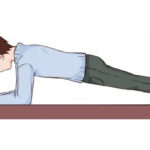How to Run on the Treadmill – Beginners Guide

It is beneficial to quickly go over a few treadmill fundamentals given that this is a comprehensive guide to treadmill running.
Treadmill Basics For Beginners
Most treadmills have a console, which displays all your workout metrics. The primary numbers on the treadmill for beginners to pay attention to are speed, incline, distance, and time. Be aware that while a treadmill may also record your calorie burn, this number is not always reliable.
The term “treadmill speed” describes how quickly you are moving. A treadmill’s speed is typically expressed in miles per hour. Some treadmills also display your pace, a more familiar metric to most runners, or you can determine your pace from your treadmill speed as follows:
- 5.0 mph = 12:00 minutes per mile
- 5.5 mph = 10:55 minutes per mile
- 6.0 mph = 10:00 minutes per mile
- 6.5 mph = 9:14 minutes per mile
- 7.0 mph = 8:34 minutes per mile
- 7.5 mph = 8:00 minutes per mile
- 8.0 mph = 7:30 minutes per mile
- 8.5 mph = 7:00 minutes per mile
- 9.0 mph = 6:40 minutes per mile
- 9.5 mph = 6:19 minutes per mile
- 10 mph = 6:00 minutes per mile
The incline denotes the slope of the treadmill. The intensity of the treadmill workout increases significantly when the incline is increased, and your posterior chain muscles (hamstrings, glutes, and calves) are used more.
The distance is how far you’ve run, and is a product of your speed and the time you’ve been on the treadmill.
The time keeps track of how long you’ve been doing your treadmill workout.
How To Run On A Treadmill
Beginners frequently lack knowledge about how to run on a treadmill. It is possible to start in a number of different ways.
The simplest approach of how to run on a treadmill for beginners is simply to get on, press the quick-start button, and increase the speed until you’re at a comfortable warmup pace.
Warm up for a few minutes with easy walking or jogging, depending on your fitness level. The treadmill speed and incline can then be changed in accordance with your objectives to get you into the thick of your workout.
Use a treadmill workout that has already been programmed as an alternative. The majority of treadmills today have pre-programmed workouts with a variety of intervals of faster speeds and inclines, followed by recovery intervals. For those just getting started who need direction and structure, these treadmill workouts can be helpful.
You should maintain the same good running form on a treadmill as you do outside, regardless of whether you use manual programming or a pre-programmed treadmill workout.
Holding on to the handrails while running will compromise your running form and greatly reduce the effectiveness of your treadmill workout.
Stay centered on the running deck, and use the safety clip for emergency stops.
Tips For Running On The Treadmill
Warm Up
It’s alluring to simply hop on the treadmill and get going. However, it’s crucial to warm up before beginning the harder portion of your run, just like when running outside.
Start with a 5-minute walk or easy jog on the treadmill before picking up the pace or increasing the incline. A warm-up increases your heart rate sends oxygen to your muscles and raises their temperature so they will be more effective.
Know Your Treadmill
Learn how to use the various features of the machine you’re using to get the most out of your workout. Ask a trainer to walk you through the treadmill’s features before you get on it if you’re using one at the gym because they aren’t always obvious at first glance. Many treadmills have:
- A heart-rate monitor to help you gauge the intensity of your workout (although a wearable monitor will be more accurate, and won’t require you to hold the handrails).
- A calorie burn calculator that shows you what you’re getting from your run—but remembers, these readouts aren’t very accurate, since they don’t factor in your age, weight, sex, and so on. Still, if you do the same workout regularly and the “calories burned” number goes up, that means you’re getting more fit.
- Pre-set workouts or intervals to help you vary your run. Due to the fact that you can simply set them and forget about them while moving, they can be useful.
- Speed display showing how fast you’re going. Typically, this is expressed in miles per hour. Check out this chart if you’d rather measure distance in minutes per mile.
Use A Slight Incline
Set the incline of the treadmill between 1 and 2 percent. Since there is no wind resistance inside, a slight ascent more closely resembles running outside. Of course, if you’re just starting out, you should leave the incline on your treadmill at zero until you develop your fitness and gain more treadmill comfort.
But once you are at ease, keep going. Maintaining the incline at zero is equivalent to running on a slight incline: too simple! You’re probably not working hard enough if you’re reading an entire magazine while barely breaking a sweat on the treadmill. You should occasionally try to push yourself even though it’s not ideal to run at a fast pace every time or for the entirety of your run (easy days are important).
To feel challenged for at least part of your workout, try increasing your speed or incline. A good way to push the pace without pushing it for the entire run is through interval training, in which you run hard for a while and then take a break for another interval. You should never exercise twice in a row. You can do interval training once or twice per week.
Don’t Hold On To The Handrail Or Console
Some people believe that while using a treadmill to walk or run, they must hold onto the handrails. However, the purpose of the handrails is only to make getting on and off the treadmill safer.
Holding on to the rails has a few drawbacks. The first is that it makes you hunch over, which is an ineffective running technique that can cause pain in your neck, shoulders, and back. Maintain an upright, straight posture. Your shoulders should be level, your back should be straight.
In reality, you’re lightening your load and making it easier on yourself by holding on to the rails, despite the fact that doing so may make you feel like you can keep up the pace and work harder. Try to run as though the rails aren’t even there and that you are outside.
You’re probably running too fast or up too steep an incline if you’re worried about falling. Reduce your incline and/or speed up. More crucial factors are safety and aesthetics.

Don’t Make It Too Steep
At the same time, avoid making the incline too steep (more than 7 percent); this puts too much strain on your back, hips, and ankles.
If they set a goal for themselves to run the entire distance on a steep incline (anything over 2 percent), some runners believe they’re getting a great workout. A lot of straight hill running, however, is never a good idea and can result in accidents. Consider this: A 3-mile hill with a 5- or 6-percent incline is unheard of outside.
Spend no more than five minutes running at a steep incline. If you alternate between running for a few minutes at an incline and a few minutes at a flat pace, you’ll get a much better, safer workout. While the flat sections improve stamina and endurance, the uphill segments aid in the development of strength.
Pay Attention To Your Stride
Similar to how you would run outside, you ought to run on the treadmill. Avoid taking short, jerky strides when running and try to follow your natural gait. Slow down until you feel like you are using the proper form if your form feels off. After that, quicken your pace.
Overstriding, or placing your foot first and far in front of your center of gravity, is another common form error. Overstriding on a treadmill causes the belt to brake because it is moving you forward. Try to keep your feet close to your body rather than in front of or behind it to avoid this. Maintain a quick stride to lessen the force that is transferred to your legs.
Improve Your Stride Count
Running more efficiently requires taking more steps per minute.4 Since you have a timer on the console, count how many times one foot touches the belt in a minute to determine your stride count. Then divide that result by two to determine your steps per minute.
Focus on taking shorter, quicker strides and keeping your feet close to the belt to increase your stride count while running on the treadmill. You can even improve your outdoor running with this workout in addition to overcoming treadmill boredom.
Don’t Lean Forward
Verify that you maintain a straight posture. Since the treadmill pulls your feet back, there’s no need to lean forward. Leaning too far forward increases your risk of developing neck and back pain as well as throwing off your balance.
Before stepping onto the treadmill, during your warm-up, and at various points throughout your run, it may be helpful to check your posture (keeping your shoulders above your hips and pulling in your abdominals).
Don’t Look Down
It can be difficult to resist checking the console often to see how much longer you have to go or how far you have to go, but if you do, your running form will suffer. Also, avoid gazing down at your feet. Running hunched over increases your risk of developing neck and back pain.
Don’t Step On Or Off While The Treadmill Is Moving
Jumping or falling off a moving treadmill is one of the leading causes of treadmill injuries.
Slow the machine down to a very low pace and lower the incline if you need to quickly get a towel, to the bathroom, or get some water. then cautiously exit. Resuming at a quick pace or steep incline is not advised when you get back on. Instead, follow the same procedure.
Better yet, make an effort to ensure that you have everything you require, including a towel, water, headphones, etc.—before you start your run, so you won’t be tempted to hop off.
Listen To Music
On the treadmill, music can be a great way to beat boredom and extend runs, even though wearing headphones while running outside is unsafe. Make a playlist of upbeat songs for your workout; this will keep you from constantly checking the time to see how much longer you have to go.
Keep an eye on your posture, particularly your neck and head, if you decide to watch TV or movies on a screen. In order to get a good view, avoid craning your neck upward to look at a screen and refrain from stooping or leaning forward. Skip the videos and stick with music or podcasts if the treadmill screen doesn’t accommodate your size or posture.
Visualize A Route
Imagine a route outside that you frequently drive or run as a way to pass the time while using a treadmill. Visualize the structures and other landmarks you would pass while running and imagine yourself doing so. When you would be traveling an outdoor route that included a hill, adjust the incline setting.
Add some speed variations as well. Because of things like the wind, hills, traffic lights, and shifting weather conditions, you run at different speeds when you’re outside. Try varying the pace and/or incline throughout the run to simulate the conditions of running outdoors.
5 Treadmill Workouts For Beginners
Since it depends on your fitness level and goals, there is no one best treadmill workout. However, new runners frequently ask what is the best treadmill workout for beginners.
Here are five suggestions for beginner treadmill workouts, though. Depending on your level of fitness, adjust the speed.
#1: Steady Does It
- 5 minutes of brisk walking
- 15-25 minutes at a steady jogging pace.
- 5 minutes of brisk walking
#2: 20-minute Hiit Treadmill Workout For Beginners
- 5-minute warm-up, walking, or jogging slowly.
- 10 x 30 seconds hard, 30 seconds easy. Try to maintain a pace that is similar to a fast run.
- 5-minute cool down walk.
#3: 30-minute Hiit Treadmill Workout At 10-minute Pace
For your hard intervals, you can select a different pace. Just pick a speed that makes you feel like you’re operating at 70 to 85% of your potential.
- 5-minute warm-up jog.
- 16 x 45 seconds hard at 6 mph, 30 seconds easy at 4 mph.
- 5-minute cool-down jog.
#4: 30-minute Incline Treadmill Workout For Beginners
- 5-minute warm-up, walking, or jogging slowly.
- 10 x 1 minute at a 3.0 incline with a 1-minute recovery at 0% incline in between each.
- 5-minute cool down walk.
#5: Advanced “HIIT” The Hills For Beginners Training For A Race
- 5-minute warm-up jog.
- 1 x 1 minute at 5k pace at 2.0 incline
- 45 seconds easy and at 0 incline
- 1 x 1 minute at 5k pace at 3.0 incline
- 45 seconds easy and at 0 incline
- 1 x 1 minute at 5k pace at 4.0 incline
- 45 seconds easy and at 0 incline
- 1 x 1 minute at 5k pace at 5.0 incline
- 45 seconds easy and at 0 incline
- 1 x 1 minute at 5k pace at 6.0 incline
- 45 seconds easy and at 0 incline
- 1 x 1 minute at 5k pace at 5.0 incline
- 45 seconds easy and at 0 incline
- 1 x 1 minute at 5k pace at 4.0 incline
- 45 seconds easy and at 0 incline
- 1 x 1 minute at 5k pace at 3.0 incline
- 45 seconds easy and at 0 incline
- 1 x 1 minute at 5k pace at 2.0 incline
- 5-minute cool down.
Frequently Asked Questions (FAQs)
How Do You Begin Running On A Treadmill?
Start out slowly; the hard-packed, immobile ground you’re used to running on is very different from the bouncy, different surface of a treadmill, which is also a moving conveyor belt.
Take your time adapting. You shouldn’t immediately start running the same distance on the treadmill just because you can run 15 miles outside.
How Quickly Should I Run On The Treadmill?
You can run as fast as you like, just keep in mind that stopping on a treadmill is a bit different than stopping outside. On a treadmill, stopping requires either jumping off the belt and onto the sides, pressing the emergency stop button, or gradually reducing speed. Each option has advantages and disadvantages.
How Long Should I Use The Treadmill?
There is no prescribed length of time or distance for treadmill running; you simply need to include it in your training program as necessary. Start with slow, low-mileage treadmill runs if you’re just getting started. You can then gradually increase your distance and time over time.
Conclusion
Every workout is an opportunity to improve, and running is a journey. It’s crucial for beginning runners to pay attention to their bodies and concentrate on the fundamentals in order to lay a strong foundation. You can work on gradually increasing speed once you begin to build endurance.
Reading More About Running Tips!
- Should You Go Running With Sore Legs Or Muscles
- Do Treadmills Use A Lot of Electricity – How Many Watts Does It Use?
- Can I Run Barefoot On A Treadmill – Barefoot Running
- How to Lose Weight on a Treadmill in a Month – Fat-Burning Ways









